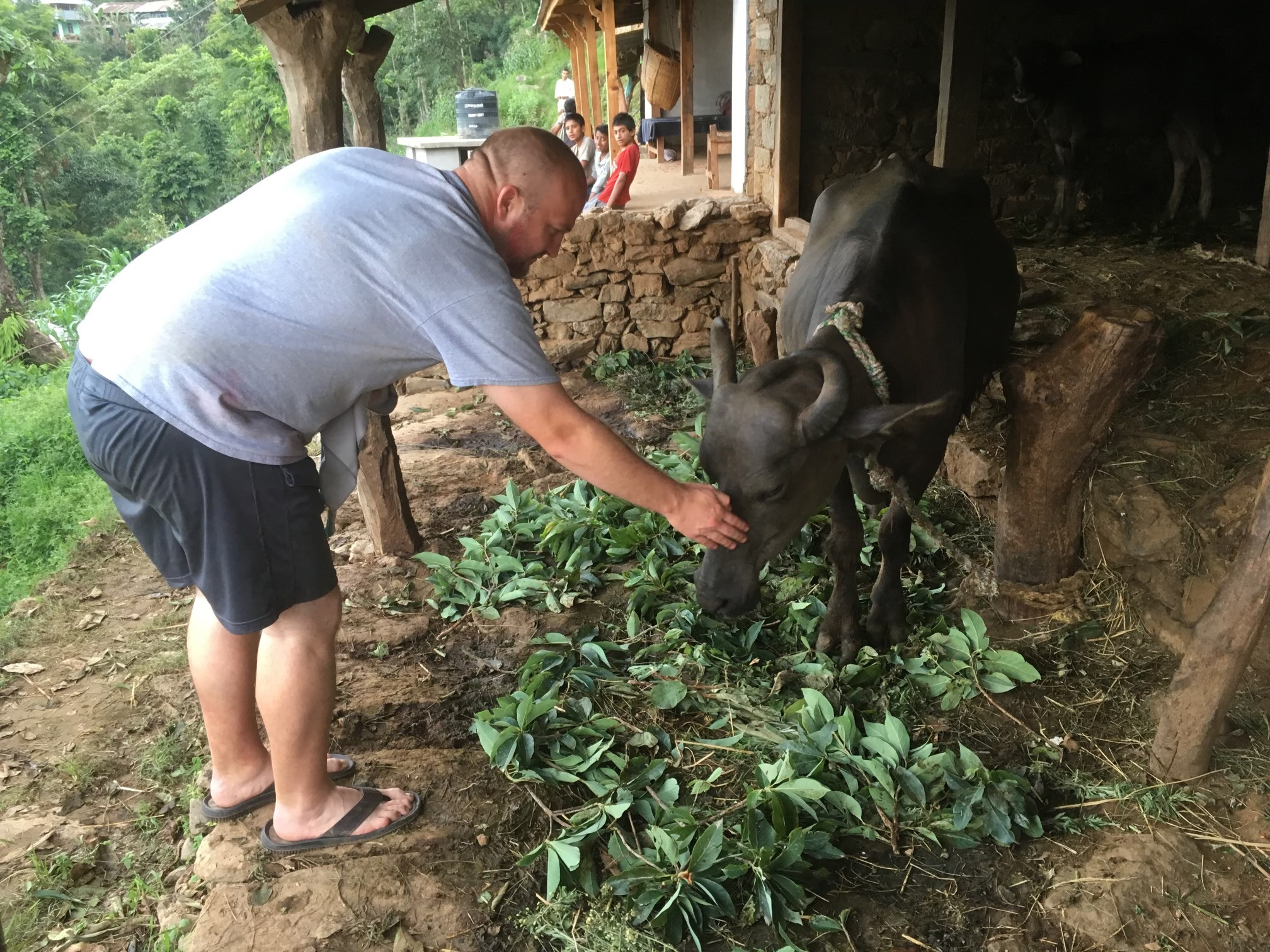When I traveled to Nepal in June 2018, the first thing I noticed once we were driving out of the bustling city of Kathmandu and into the countryside, were the golden fields of rice. I had never seen rice fields, and this former Iowa farm kid was intrigued. I asked our driver to pull over so I could get a closer look. The fields were all massive and people were harvesting the rice all by hand. It was an incredible sight. After continuing our drive for the rest of the day, we finally arrived at our destination for the week, a beautiful mountainside village called Goganne. The family that hosted us had a buffalo that lived next to the house. This animal provided fresh milk every day, some of which was converted to yogurt. Every morning at the village, my breakfast included a warm cup of buffalo milk about 30 minutes after being retrieved from the buffalo. In turn, the villager that tended the buffalo would clean her daily and ensured she had a steady diet of vegetation to eat.

On the daily walks from Goganne to surrounding schools, we were constantly walking by rice fields grown in terraces in the mountainsides. I grew up in the vast and flat prairie of Iowa, so it was remarkable seeing the ingenuity of these fields in Nepal. Even more remarkable was crossing paths with villagers aging anywhere from pre-teen to over 70 years old that would carry 50-pound bags of rice with a band slung over their forehead walking up and down the mountain to deliver their harvest. I tried carrying a bag for about 5 minutes before I was absolutely exhausted and completely humbled.
From that trip in 2018, one of the things I most reflect on, is the tenacity of the Nepalese farmers. Harvesting enough crops to feed their families and villages is a necessity, and poor harvests can have a disastrous outcome. Failure is not an option for these farmers. With the recent massive earthquakes, and global warming altering the climate, farming in the countryside of Nepal has become substantially more difficult than it already was. Climate change has led to a more severe monsoon season, and Nepal is now being more commonly inflicted with massive flooding. This flooding washes away roads and creates mudslides that destroy the terraced fields.
On my trip to Nepal when I was visiting with our Foundation’s sponsored students, I was impressed with the number of students that intended to become civil engineers. Many of these students were motivated by the effect the earthquakes have had on their country and strive for a career where they can improve the future of the country by making infrastructure more resistant to earthquakes and floods. My sincere hope is one of the outcomes of the Foundation’s mission is that many of these students reach their goals and help create an improved infrastructure and a farming sector that is less burdensome for the Nepalese farmer. The donations made to the Rebuild Nepal Education Foundation are instrumental in helping these children reach their dreams, leading them out of poverty, and providing them an opportunity to make meaningful and long-lasting changes for their beloved country.
